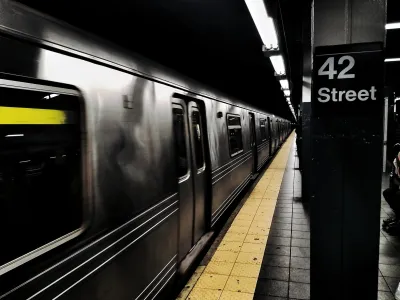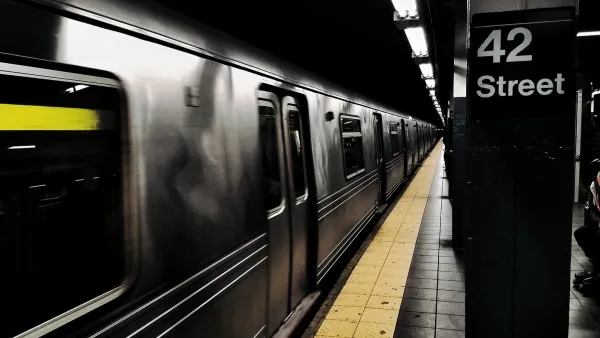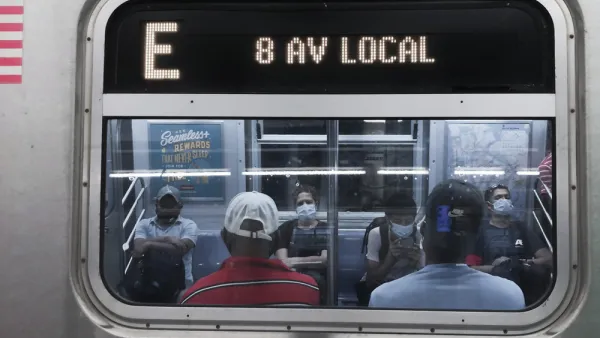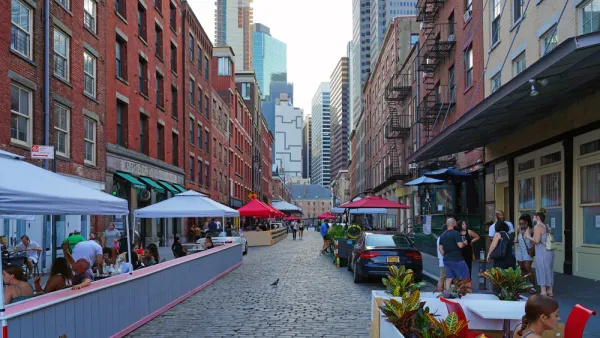Deep cleaning of the New York City subway and bus system is part of the Metropolitan Transportation Authority’s coronavirus response. But it is costly and time consuming, and the public health benefits are not entirely clear.

"The Metropolitan Transportation Authority, the nation’s largest public transit agency, began a rigorous cleaning process at the height of the pandemic as its workers were sickened by the virus and New Yorkers fled the system in record numbers," writes Danielle Muoio.
The cost for the cleanings is expected to reach $500 million a year. The process also involves shutting down the subway each night for four hours. Transit advocates say that money could be better spent, particularly since little evidence shows that cleaning surfaces helps prevent the spread of the coronavirus.
"[Danny] Pearlstein, who opposes the overnight subway shutdown, has said the state-run authority should focus more on increasing service — which would theoretically allow riders to spread out more easily since they could wait for less-crowded trains or buses," adds Muoio.
The MTA says that the cleaning regiment is part of a larger strategy to address the coronavirus and that clean vehicles and stations are helping to draw back riders. Health experts also say that much about the transmission of COVID-19 is unknown and such thorough cleaning could prove beneficial.
FULL STORY: MTA spending to clean trains may be largely cosmetic

National Parks Layoffs Will Cause Communities to Lose Billions
Thousands of essential park workers were laid off this week, just before the busy spring break season.

Retro-silient?: America’s First “Eco-burb,” The Woodlands Turns 50
A master-planned community north of Houston offers lessons on green infrastructure and resilient design, but falls short of its founder’s lofty affordability and walkability goals.

Delivering for America Plan Will Downgrade Mail Service in at Least 49.5 Percent of Zip Codes
Republican and Democrat lawmakers criticize the plan for its disproportionate negative impact on rural communities.

Test News Post 1
This is a summary

Test News Headline 46
Test for the image on the front page.

Balancing Bombs and Butterflies: How the National Guard Protects a Rare Species
The National Guard at Fort Indiantown Gap uses GIS technology and land management strategies to balance military training with conservation efforts, ensuring the survival of the rare eastern regal fritillary butterfly.
Urban Design for Planners 1: Software Tools
This six-course series explores essential urban design concepts using open source software and equips planners with the tools they need to participate fully in the urban design process.
Planning for Universal Design
Learn the tools for implementing Universal Design in planning regulations.
EMC Planning Group, Inc.
Planetizen
Planetizen
Mpact (formerly Rail~Volution)
Great Falls Development Authority, Inc.
HUDs Office of Policy Development and Research
NYU Wagner Graduate School of Public Service





























